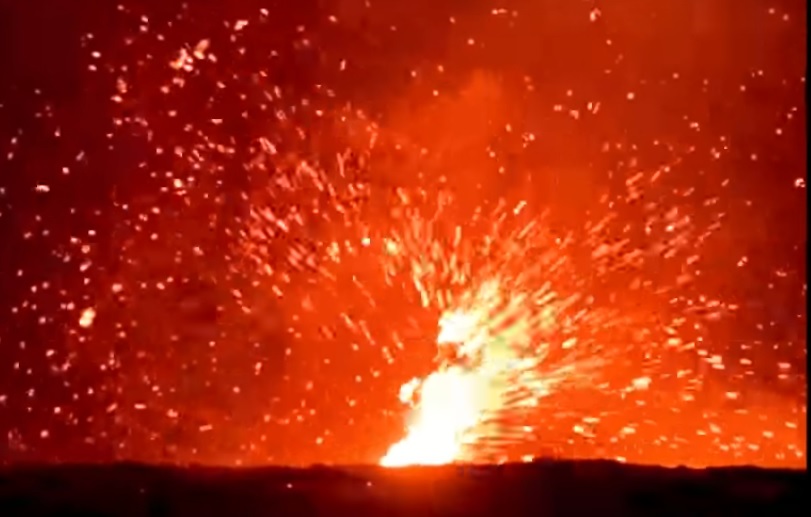When Whirlwinds Meet Hot Lava: Lava Devils!

There are so many things to see while watching a livestream of a volcanic eruption. Lava fountains, spatter cones being built up and falling down, turbulence in lava flows… and lava devils?!
Yes, indeed! Keep your focus on the left in the video below, and you’ll see molten lava sucked up and flung about by a vigorous little whirlwind during Kilauea’s latest summit eruption:
It seems utterly freakish, but lava devils really aren’t much different from the better-known dust devils and fire whirls. It’s just that they pick up lava rather than dirt or fire. The basic mechanisms are the same: heated ground plus light surface winds giving rise to a vortex of air.
Lava’s quite good at heating things up: Kilauea’s lava can reach 2,000°F (1000°C) or higher. It certainly gets breezy up at the summit: you can watch the volcanic gasses drift in different directions as the breezes shift. We know there are thermals rising off the lava flows, because koaʻe kea birds delight in riding them. And the weather in Hawaii has been a bit cool, so we had a layer of cooler air above the air heated by the lava. All of those pieces came together to start a whirlwind.
Kilauea has spawned lava devils before. The Fissure 8 channel in the Lower East Rift Zone created an absolutely beautiful example in 2018:
Lava devils aren’t confined to Kilauea, either. They happen wherever molten lava flows meet or create proper meterological conditions. The 2021 Geldingadalir eruption in Iceland even had fantastic examples of a lava devil transitioning to a dust devil right on the flank of the new cone.
Watching these videos may raise a few questions. Such as:
Are lava devils dangerous?
Dust devils are generally benign, but I can’t say I’d say the same for lava devils! You can see in the videos how they pick up chunks of incandescent lava and fling them around, sometimes many meters away. If you ever get lucky enough to see one in real life, definitely maintain a healthy distance.
Are lava devils tornadoes?
They’re a spinning column of air, but they’re a totally different thing. They rise from the ground up, instead of descending from a mesocyclone. In fact, you don’t even really need clouds for a lava devil at all. As long as you have cool air aloft, breezes near ground level, and open lava, you’ve got the right conditions.
Lava whirl or lava devil?
They haven’t been officially named yet, but I personally lean toward lava devil these days. It just sounds more metal.
Keep your eyes peeled on the live feed when Kilauea’s eruption resumes. You may just get to see a lava devil live!
References:
Britannica: Whirlwind
Mila, Zinkova (2019): 2018 Kīlauea eruption. Weather 75(10)
United States Geological Survey: Kīlauea Volcano — Whirlwind Above Fissure 8

Rosetta Stones and Dana Hunter’s Unconformity wouldn’t be possible without you! If you like my content, there are many ways to show your support.
This website is a member of the Amazon Affiliates program. I get a small commission when you use my affiliate link to make a purchase.
Thank you so much for your support!



